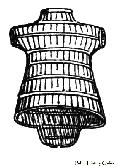
|
Coat Of Arms Of Assyrian Horseman
|
|
Coat of arms of Assyrian horseman, probably of plates of metal sewed on leather. Copied from bas-reliefs in the British Museum. |

|
Greek Corslet
|
|
Greek corslet composed of two pieces, back and breast plate. Found in environs of Naples. Museum of Artillery, Paris. |

|
Greek Coat Of Mail
|
|
Ancient Greek coat of mail with sword worn on the right side. |
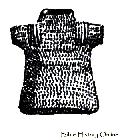
|
Egyptian Coat Of Mail
|
|
Ancient Egyptian coat of mail. |

|
Egyptian Coat In Crocodile Skin
|
|
Ancient Egyptian coat in crocodile skin. From Egyptian Museum of Belvedere, Vienna. |
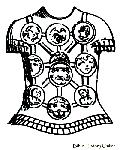
|
Cuirass Of A Roman Centurion
|
|
Cuirass of a Roman centurion, 22 inches in length. Ornamented with nine silver phalerae or military distinctions. In the possession of King William I of Prussia. Cast of this is in the Museum of Artillery in Paris. |

|
Bronze Scales Of A Squamata
|
|
Bronze scales of a squamata or ancient Roman cuirass. Copied from those found at Avenche, the ancient capital of Roman Switzerland. |

|
Gallic Cuirass In Bronze
|
|
Gallic cuirass in bronze, found in a field near Grenoble. From Museum of Artillery in Paris. |

|
Fragment Of Cuirass Found In Switzerland
|
|
Fragment of cuirass found in Switzerland, probably made by the Allemanni who invaded Switzerland in the fourth century. Made of long plates of iron riveted to each other. From Cabinet Of Antiquities in Zurich. |

|
Scandinavian Casque And Coat Of Arms
|
|
Scandinavian casque and coat of arms probably in leather and iron. This is copied from the columns of Theodosius at Constantnople. May have belonged to allies of barbarian mercenaries |

|
Italian Armor Of The End Of 14th Century
|
|
Italian armour of the 14th century, from the tomb of Jacopo Cavalli at Venice, who died in 1384. |

|
Italian Armor Of The End Of 15th Century
|
|
Italian armor of the end of the 15th century, from the equestrian statue of Bartolommeo Colleoni at Venice. This war harness is interesting on account of its enormous shoulder pieces, which are not fastened either to the arm-guards, to the back or to the breastplate, for between them may be seen a large surface of coat of mail. |

|
Front And Back View Of Dutch Armor Of 15th Century
|
|
Front and back view of a dutch armor from the 15th century, from a bronze statuette of William VI (1404-1417). The armor is seen with enormous knee-pieces and the back plate consist of two pieces. |

|
Gothic Armour Of Polished Steel Of The 15th Century
|
|
Gothic armour of polished steel of the 15th century. The casque, a kind of heaume has a rounded crown and hinged vizor. Attributed to Frederick I., Count Palatine of the Rhine, who died in 1476. |

|
German Gothic Armour Of The 15th Century
|
|
German Gothic armor of the 15th century, attributed to Sigismund of Tyrol. From Ambras Collection at Vienna. |
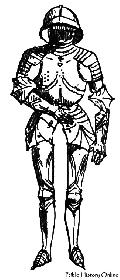
|
Fine Gothic Armour Of The First Half Of 15th Century In Polished Steel
|
|
Fine Gothic armour of the first half of 15th century in polished steel. Forms part of the collection in the Museum of Sigmaringen and is erroneously attributed to the Count of Hohenzollern-Eitel, Frederick I of the 13th century. |

|
Armor Of Man And Horse Attributed To Maximilian I
|
|
Armor of man and horse, attributed to Maximilian I born in 1459 died in 1519. The cuisses, greaves, solerets and arm-guards do not properly belong to the suit but are of the 16th century. The salade has a movable vizor and a laminated chin-piece. From Ambras Collection. |

|
German Gothic Tilting Armor
|
|
German Gothic tilting armor of the second half of the 15th century in polished steel. It is remarkable on account of the large size of the palettes, the tilting targe and the heaume. From Ambras Collection at Vienna. |

|
German Gothic Tilting Armor Of The Second Half Of 15th Century
|
|
German Gothic tilting armor of the 15th century, in polished steel considered fine and elegant suit of armor belonging to the best period. The most noticeable features are the heaume, the gauntleted arm-guard of the left hand and the leg-guard. This suit is attributed to Maximilian I, was made at Augsburg. Found in the Imperial Arsenal of Vienna. |

|
Fine Gothic Armour Of The Second Half Of 15th Century - Back View
|
|
Back view of a fine Gothic armour of the second half of the 15th century. The tilting heaume is seen fixed to the back-plate by a strong hinge. The lance rest and the shoulder pieces are very large, but the loin guard is defective, and rendered a coat of mail an indispensable addition. |

|
German Armor End Of 15th Or Beginning Of 16th Century
|
|
German armour, end of 15th or beginning of 16th century, with volant piece, two large tassets and the breastplate of the cuirass with a tapul or ridge. From Imperial Arsenal of Vienna. |

|
German Fluted Armour Called Maximilienne and Milanaise
|
|
German fluted armor called Maximilienne and Milanaise of the beginning of 16th century. The cuirass is rounded, the breastplate does not possess the central ridge, the shoulder pieces are large and with passe gardes. From Imperial Arsenal Of Vienna. |

|
German Armour In Polished Steel
|
|
German armour in polished steel, cut in facets, for fighting on foot, of 1513. Supposed to have belong to the Ambras Collection. Museum of Artillery in Paris. This harness covers the whole body, leaving no part unprotected. |
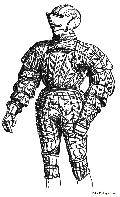
|
Front View Of German Puffed Armour
|
|
Front view of German puffed armour, in steel cut in facets, of the first half of 16th century. Belonged to William of Rogendorf. This fine war harness indicates a suit to be worn for fighting on foot. From Ambras Collection. |
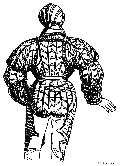
|
Back View Of German Puffed Armour
|
|
Back view of German puffed armour. From Ambras Collection. |

|
German Armour In Steel
|
|
German armour in steel, polished and facetted, of 1526. The cuirass is rather rounded in shape and bears in the center of it the initials S.L. as monogram. The tassets and waist-piece are joined and the shoulder pieces have passe-gardes. the armet is very peculiar, having a movable double vizor. The solerets are club or paw-shaped, and the greaves not being ornamented. From Imperial Arsenal Of Vienna. |
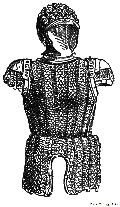
|
Italian Armour Attributed To Duke Of Urbino - 1538
|
|
Italian armour of the first half of the 16th century, in the style of the brigantine jacket, which was worn in Italy during the 15th century. It is attributed to the Duke of Urbino (1538). |

|
Richly Damascened Or Inlaid Armour Of 16th Century
|
|
Richly damascened or inlaid armour of the second half of 16th century, it is of Nuremberg workmanship. From Imperial Arsenal of Vienna. |

|
Back View Of Richly Damascened Armour
|
|
Back view of the richly damascened or inlaid armour of the 16th century. From Imperial Arsenal of Vienna. |

|
German Suit Of Steel Armour
|
|
German suit of steel armour, richly ornamented with engraving and in laying. From the second half of 16th century. From the Imperial Arsenal of Vienna. |

|
German Skirted Armour
|
|
German skirted armour of the first half of the 16th century, attributed to the Archduke Ferdinand, Count of Tyrol. The small engraved ornaments represents eagles. From Ambras Collection. |

|
Suit Of Armour Manufactured In Augsburg
|
|
Suit of armour, Augsburg manufacture, of the second half of the 16th century. Entirely covered with rich embossed ornament. From Museum of Imperial Artillery in Vienna. |

|
German Plate Armour In Polished Steel
|
|
German plate armour in polished steel from second half of 16th century. On the breast plate is the name of the knight to whom it belonged, Adam Gall who died in 1574. From Imperial Arsenal Of Vienna. |

|
Spanish Plate Armour Attributed To The Duke Of Alva
|
|
Spanish plate armour, attributed to the Duke of Alva (1508-1582). The armet, a kind of burgonet is deficient as it leaves too large a space between the chin-piece and eye-shade of the helmet. On the breastplate is engraved a knight in prayer before a crucifix. From Ambras Collection. |

|
Italian Armour In Steel
|
|
Italian armour in steel inlaid with silver, end of the 16th century and which is believed to have belonged to Alessandro Farnese. This suit is of splendid workmanship, as well as of great fineness. The breastplate rises into a ridge and has a lance-rest. The space between the tassets and the absence of the large brayette, necessitate the use of mail. From Imperial Arsenal of Vienna. |

|
German Armour Of The End Of 16th Century
|
|
German armour of the end of 16th century, richly embossed and whose work indicates the school of Munich or Augsburg. Considered to have belonged to the Emperor Rodolph II (1572-1612. From Ambras Collection at Vienna. |

|
German Armor Of The 17th Century Attributed To Archduke Leopold
|
|
German armor of the 17th century, attributed to the Archduke Leopold who became emperor in 1658. From Ambras Collection in Vienna. |

|
Hungarian Armour Of The 17th Century
|
|
Hungarian armour of the end of 16th or beginning of 17th century, composed of chain and plate. The round shield is ornamented with a painting representing a cross-bow. The whole equipment has an oriental character about it. From Imperial Arsenal Of Vienna. |

|
Hungarian War Harness
|
|
Hungarian war-harness in steel, richly damascened of German manufacture of the 17th century. Characterized by the peculiar form of the casque and shield. The mace in the right hand of the man is a weapon of the 16th century. From Imperial Arsenal of Vienna. |
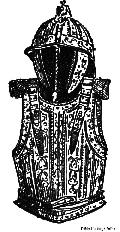
|
Richly Damascened And Engraved Cuirass Of 18th Century
|
|
Richly damascened and engraved cuirass with ridged breastplate, and helmet, with nose-piece, cheek and neck-guards, a kind of burgonet. Arms of the end of the 17th or beginning of the 18th century. |

|
Large German Tilting Guard
|
|
15th-16th century large German tilting guard with a volant-piece and a screw lance rest. The helmet already protected by the chin-guard, to which it is screwed is also fastened to the back plate of the cuirass by the crest. From Museum of Dresden. |

|
15th Century Gothic Cuirass
|
|
Very elegant 15th century Gothic cuirass with salient ridge and lance rest. From Ambras Collection. |

|
15th Century Gothic Cuirass From Arsenal Of Zurich
|
|
15th century Gothic cuirass without lance rest, with scaled back plate and waist piece. From Arsenal of Zurich. |

|
15th Century Cuirass With Salient Ridge
|
|
15th century cuirass with salient ridge, in iron and very heavy, covered with red velvet and studded with iron-headed nails. From National Museum of Bavaria at Munich. |

|
Gothic Cuirass From Arsenals Of Maximilian I
|
|
Gothic cuirass from Arsenals of Maximilian I. Without salient ridge, very rounded and believed to belong to a German suit, end of the 15th century. From Ambras Collection. |

|
Semi-Rounded Cuirass Of A German Suit Of 15th Century
|
|
Semi-rounded cuirass of a German suit of the 15th century. Without tapul or salient ridge and in embossed iron. From Meyrick Collection. |

|
Semi-Rounded Cuirass Of A German Fluted Suit Of The 15th Century
|
|
Semi-rounded cuirass without tapul, but with lance rest, of a German fluted suit, from end of the 15th century. Called Maximilienne and Milanese, with a very beautiful shape. From Arsenal of Vienna. |

|
Semi-Rounded Cuirass Of A German Suit
|
|
Semi-rounded cuirass without tapul and part of a German suit. End of the 15th or beginning of the 16th century. From Museum of Artillery in Paris. |

|
Semi-Rounded Cuirass From A German Suit Of Armour
|
|
Semi-rounded cuirass with tapul and waist-piece, from first half of the 16th century. Part of a German suit of armour belonging to the Landgrave Philip the Magnanimous. |

|
Semi-Rounded Cuirass From Suit Belonging To A Knight Of The Order Of St. George
|
|
Semi-rounded cuirass with tapul and lance rest, from first half of the 16th century. Part of a suit belonging to a knight of St. George. From Meyrick Collection. |

|
Cuirass Of Nuremberg Suit
|
|
Cuirass with tapul, part of Nuremberg suit of the year 1570. From Imperial Arsenal of Vienna. |

|
Italian Engraved Cuirass
|
|
Italian engraved cuirass with tapul, from end of the 16th century. From Ambras Collection. |

|
Peascod Shaped Cuirass In Plates
|
|
Peascod shaped cuirass in plates, with tapul. From end of the reign of Henry III (1589). |

|
Cuirass With Long Lobster Shell Cuisses
|
|
Peascod-shaped cuirass with tapul, and long lobster-shell cuisses instead of tassets. From reign of Louis XIII (1610-1643). |

|
Italian Cuirass
|
|
Italian cuirass with buttons and peascod shaped tapul. From Collection of Count of Nieuwerkerke. |
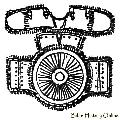
|
Persian Leather Cuirass
|
|
Persian leather cuirass of the 16th or 17th century. This armour is inlaid and quilted. From Meyrick Collection. |

|
16th Century Cuirass Of Jannisary
|
|
16th century cuirass of janissary. From Museum of Artillery in Paris. |

|
17th Century Cuirass Of Jannisary
|
|
17th century cuirass of janissary. From Museum of Artillery in Paris. |
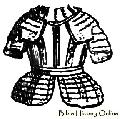
|
17th Century Half Armour In Engraved Iron
|
|
17th century half-armour in engraved iron, ornamented with gilt nails. Preserved at the Arsenal of Soleure. |

|
Cuirass In Plates Belonging To German Reiter
|
|
17th century cuirass in plates belonging to a German Reiter. Some German authors called these suits of plate crabs. |




























































